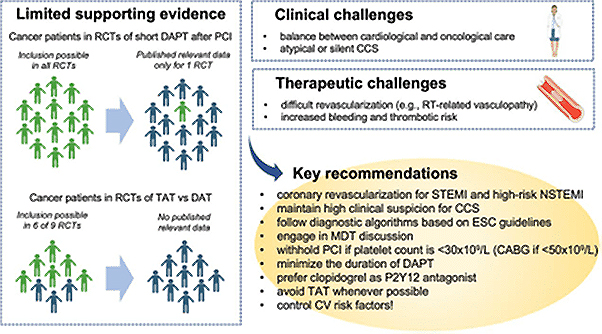Main 1.
Arrhythmia and Antithrombotic Treatment in Cancer Patients
How to use Antithrombotic Agent in Patients with Heart Disease and Cancer Treatment- Cardiologist View

Young-Hoon Jeong, MD, PhD
Chung-Ang University Korea
Cardiologists are increasingly encountering cancer patients who also suffer from coronary heart disease (CHD).
The interplay between these two conditions is driven by several factors, including the improving survival rates among cancer patients.
Common cardiovascular (CV) risk factors, such as hypercholesterolemia and obesity, contribute to both CHD and cancer through mechanisms
like systemic inflammation and enhanced coagulation activity. Moreover, research suggests that IHD and cancer may mutually exacerbate each other,
while the CV or metabolic toxicity of anticancer therapies can further lead to CHD.
Managing CHD in cancer patients presents significant challenges due to atypical presentations, an elevated risk of bleeding and ischemia,
and generally worse outcomes compared to non-cancer patients. Bleeding in these patients is often exacerbated by thrombocytopenia, coagulopathy,
and direct mucosal disruption in the gastrointestinal and genitourinary tracts. Decisions regarding coronary revascularization and the selection
of antithrombotic therapy are complex, requiring a careful balance between ischemic and bleeding risks. This necessitates multidisciplinary
discussions that incorporate both general guidelines and the specific circumstances of each patient.
Active cancer is recognized as a major criterion for heightened bleeding risk, as highlighted by the Academic Research Consortium for High
Bleeding Risk. In cancer patients with CHD who undergo percutaneous coronary intervention, dual antiplatelet therapy should be minimized in
duration and intensity.
For those with chronic coronary syndrome, the European Society of Cardiology (ESC) guidelines suggest that aspirin, with or without clopidogrel, may
be considered. However, randomized controlled trial evidence specific to cancer patients remains scarce, underscoring the urgent need for more data to
guide clinical practice. The coexistence of CHD and cancer raises critical scientific and practical questions, demanding collaborative efforts from the
fields of cardio-oncology, cardiology, and oncology.

Figure 1. Management of coronary heart disease in patients with cancer
NSTEMI = non-ST-elevation myocardial infarction; RT = radiotherapy; STEMI = ST-elevation myocardial infarction;
TAT = triple antithrombotic therapy; RCT = randomized controlled trial; DAPT, dual antiplatelet therapy;
CCS, chronic coronary syndrome; MDT, multidisciplinary team; CABG, coronary artery bypass graft
